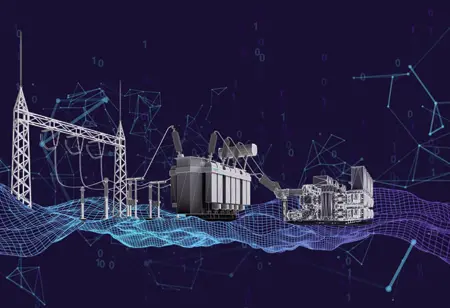Thank you for Subscribing to Electrical Business Review Weekly Brief
I agree We use cookies on this website to enhance your user experience. By clicking any link on this page you are giving your consent for us to set cookies. More info
How EV Adoption is Shaping the Future of the Grid and Driving Technological Advances
The shift to electric transportation is driving an exciting transformation in the automotive industry, with electric vehicles (EVs) now taking center stage.

By
Electrical Business Review | Friday, January 03, 2025
Stay ahead of the industry with exclusive feature stories on the top companies, expert insights and the latest news delivered straight to your inbox. Subscribe today.
The shift to electric transportation is driving an exciting transformation in the automotive industry, with electric vehicles (EVs) now taking center stage.
FREMONT, CA: This transformation is marked by exciting advancements in electric vehicle charging, breakthroughs in battery technology, and the evolving impact of EVs on our electrical grid.
Charging Infrastructure: A Network Unveiled
Charging infrastructure is the bedrock of the EV revolution, redefining how we perceive transportation. The global surge in EV adoption has propelled a swift expansion of charging networks. Notable players like Electrify America and EVBox have accelerated this growth, installing high-speed charging stations at convenient locations such as shopping centres, workplaces, and highways. Ultra-fast chargers with capabilities to add hundreds of miles of range in mere minutes are becoming increasingly common, alleviating range anxiety and promoting the widespread acceptance of EVs.
Battery Innovation: Powering the Transition
Revolutionary strides in battery technology are powering the shift toward EVs. Lithium-ion batteries, the backbone of modern EVs, are evolving rapidly. Enhanced energy densities and charging speeds extend driving ranges and reduce charging times. Solid-state batteries, a promising avenue of research, could further transform the landscape by delivering even higher energy densities and improved safety. These innovations make EVs more practical for everyday use, blurring the distinction between them and their internal combustion engine counterparts.
Grid Transformation: Challenges and Opportunities
Integrating EVs into the electrical grid has spurred challenges and opportunities. The influx of EVs presents concerns about grid stability and peak demand management. However, these challenges are also driving innovation. Innovative charging technologies, leveraging artificial intelligence and real-time data, are being developed to optimise charging schedules, mitigating stress on the grid during peak hours. Vehicle-to-grid (V2G) technology, a concept gaining traction, allows EVs to discharge excess energy back to the grid, acting as distributed energy storage and enhancing grid resilience.
Environmental Implications and Policy Support
EV adoption isn't just about transforming the automotive industry; it's a critical step toward reducing greenhouse gas emissions. As countries strive to meet climate goals, policies are being enacted to incentivize EV adoption. Tax incentives, rebates, and subsidies make EVs more attractive to consumers. Simultaneously, automakers are pledging to transition their fleets to electric, signalling a significant shift in manufacturing priorities. This convergence of policy and industry commitment is propelling the EV revolution forward.
Economic Opportunities and Collaborative Synergy
The EV revolution isn't limited to transportation; it fosters economic opportunities across industries. The demand for battery materials like lithium, cobalt, and nickel is surging, driving mining and resource exploration. Moreover, enterprises are collaborating to accelerate EV adoption. Automakers are partnering with technology firms to streamline charging infrastructure development, while utilities are collaborating with EV manufacturers to pilot V2G programs, forging a symbiotic relationship between the energy and transportation sectors.
The Road Ahead
The electrification of transportation is transcending vehicular propulsion; it's driving innovation, spurring economic growth, and redefining urban planning. The journey ahead involves addressing challenges such as charging accessibility for apartment dwellers and rural communities while also optimising grid management to accommodate higher EV penetration. The EV revolution is a testament to human ingenuity and determination in the face of environmental challenges. As the wheels of progress turn, the road ahead is charged with possibilities, illuminating a sustainable future for generations to come.








